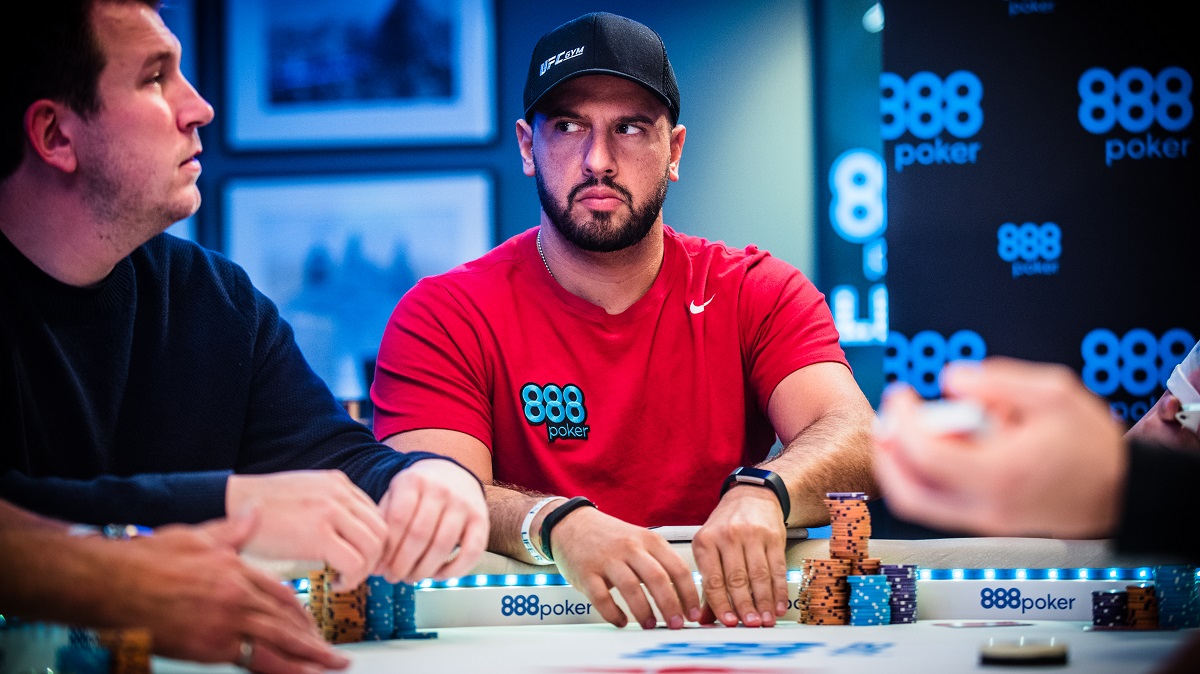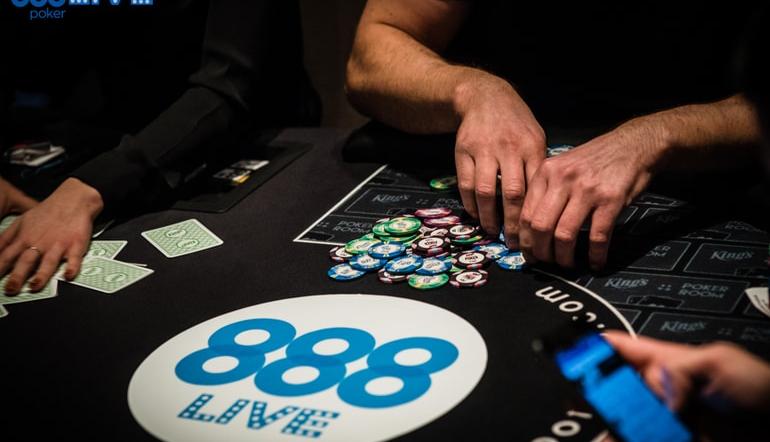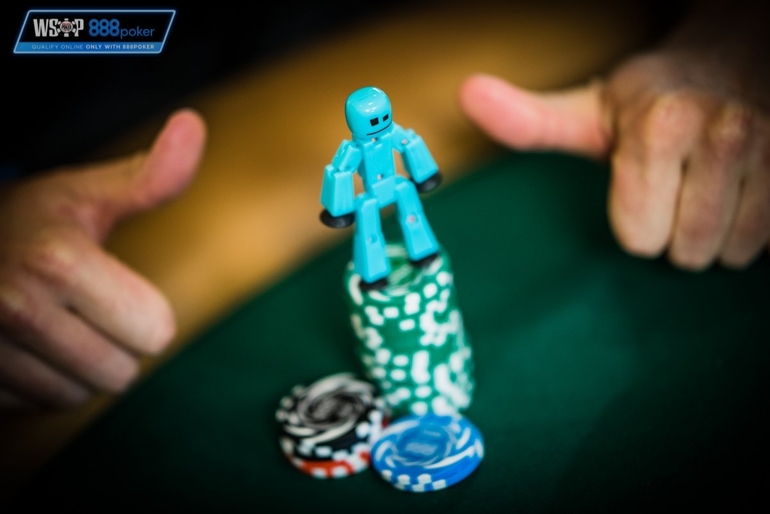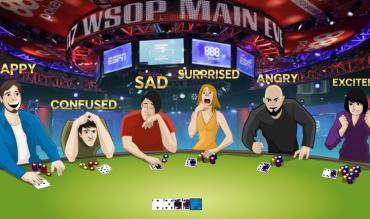It’s no secret that a big part of live poker is picking up our opponent's body language or "tells". In this context, a “tell” is an involuntary physical indicator that helps us to understand more about the cards our opponent may be holding.
Before we launch into our list of tells, it’s essential to understand the following:
Different tells can mean different things for different players.
In other words, most physical tells are not going to be reliable within themselves. We have to interpret them in the context of the player who is giving the tell. We first need to create a mental map of how our opponent acts by default and then look for deviations from this. It’s deviations from this default profile which provide us with information.
To put it simply, our opponent might be giving us all the signs that he is bluffing, but actually, that’s just how he usually looks.
We need to observe our opponents for a while before we know what means what.
Body Language Poker Tells:
In no particular order, here are the places professional poker players train themselves to look on the quest for physical tells.
The list is by no means exhaustive but should get us off to a great start:
1. The Eyes
The eyes can give a tremendous amount of information away regarding what our opponent is feeling or thinking. It’s no surprise that many players elect to conceal their eyes with sunglasses.
There are two main factors here:
- Fearful eyes – It’s usually possible to detect fear along with a range of other emotions. Fear causes the pupils to dilate. Of course, we’ll still need to know what that fear means. Often our opponent is thinking about bluffing or holds a strong hand, but sometimes it can mean the something entirely different.

- Gaze direction – Watching our opponent’s eyes, carefully, we’ll often see them make quick glances in particular directions - at the board, at their chipstack, at our chipstack. All of these carry meaning.
For example, our opponent immediately glances at our stack after seeing the turn card. Maybe he caught big and wants to know if we have him covered. Sometimes the absence of looks in certain directions can be telling, also. For example, our opponent stoically doesn’t check his hole cards for the entire hand,even though we know he typically does.
Finally, after our opponent has made a bet, he generally has two choices:
- Gaze off into space.
- Make eye contact with us.
Again, neither of these carries meaning in themselves. But if our opponent typically employs Option 1 and suddenly switches to Option 2, there is a good chance it has some meaning. Perhaps he is staring us down as part of an intimidation tactic.
2. The Mouth
Some players believe the mouth is an even more significant tell indicator than the eyes.
Look out for the following:
- Nervous lips – Relaxed lips are generally full and rounded. Tense lips are more likely to be thin and pinched. Once we figure out what this means in the case of individual opponents, we’ll have an excellent tell indicator.
- Twitches / Micro-expressions –It takes a lot of skill to conceal thoughts and feelings leaking through our face. Sometimes our true feelings are displayed on our face for a fraction of a second before we get them under control.
We can refer to these as micro-expressions or perhaps even “twitches”. These small movements are easy to miss but carry large amounts of information when spotted.
3. The Heartbeat
Poker is a game that can get the blood pumping. Perhaps when being dealt a huge hand or running a big bluff. Naturally, our heart rate is going to increase during these moments. Good thing that our heart rate is imperceptible right? Perhaps not always.
Spotting the Heartbeat – It’s true that this is a tough one to spot, and in many cases, we are simply not going to get a handle on it.
It’s worth looking out for the following –
- Visible heartbeat through thin clothing such as a t-shirt.
- A pulsing vein on neck or temple (or elsewhere).
- Symptoms of high heart rate (such as trembling hands or quivering voice).
Think about the types of scenarios that get you involuntarily excited as a player. It’s usually not when holding some dull mid-strength hand. We’ll typically either have hit big or are thinking about running a big bluff. We’ll begin to learn what exactly this means for different opponents.
4. The Voice
There are several tell possibilities to watch out for here:
- Quality of voice – It’s often possible to get some handle on Villain’s mental state through their tone of voice. How does their voice compare to the relaxed style at the start, before any cards were dealt?
- Decision to vocalise – The decision to talk can be a tell in itself. Remember that we are not required to speak at any point. We can make all of our actions with chips and gestures, and we certainly don’t need to involve ourselves in any table talk. Our opponent always vocalises but suddenly starts acting silently (tapping the table, sliding chips, etc.). What does it mean?
Our opponent rarely talks but tries to start asking us questions during a big river pot. Does he like to do that when strong or weak? We address our opponent on the river to see if he chooses to respond. We try to gauge him, based on the quality of his voice and the content of what he is saying. This technique is known as “speech-play”. It can reveal lots of information but is generally considered poor etiquette when overused.
- Chattiness – We are looking out for sudden changes in profile here. Players that are usually chatty but suddenly go silent. Players that are quiet and suddenly become chatty.
5. The Hands

We might think initially to look at whether our opponent’s hands are shaking or not. This decision is undoubtedly a good idea, but we have already covered this in the heartbeat section.
The hands can convey information in a range of other ways -
- Handling Chips – It’s worth taking note of how our opponent puts chips into the pot by default. Does he slide them in gracefully, or thrust them in forcefully? Does he ever splash the pot, whether intentionally or not? Sometimes players subconsciously (or consciously) make their bets in different ways. Shoving the chips forcefully while even partially splashing the pot could be considered an intimidation tactic, hoping to elicit folds.
Then again, as we have probably realised, poker tells operate on levels. A player might shove chips in forcefully hoping to make himself look weak when he holds a legitimate, made hand. Knowing our opponent is clearly crucial.
- Card Apex – This move is often overlooked, but professionals always know to pay attention to this. Card apex refers to the amount of time a player spends checking his hole cards after lifting the edges of his cards from the felt. The length, frequency and even height of a card apex can often result in extra information regarding our opponent’s holding.
- Chip Tricks –What does a player do with his hands when not making a betting decision? Many players like to perform chip tricks while waiting for the action, but this can lead to trouble in some cases. What does it mean when a player who is always performing chip tricks suddenly stops? Of course, he might merely be giving his tired fingers a rest, but it could also be indicative of something more meaningful.
6. Card Protectors + Miscellaneous Items

If we want to avoid giving away any unsolicited information, we need to be completely conscious of all of our activities and make sure no patterns are given away. One commonly overlooked area is the use of card protectors.
Card protectors are objects placed on top of hole cards to 1) avoid their values being exposed and 2) prevent the hand being incorrectly mucked by an overzealous dealer.
- Consistency – If we always use a card protector, no problem. If we never use a card protector, no problem either (hopefully). However, if we sometimes use a card protector and sometimes don’t, we need to be very careful that we are not giving away unwarranted information. If our opponent suddenly stops using his card protector in one isolated hand, what does it mean?
- Other items – Many of us have watched enough films to remember how Teddy KGB gave away all his chips by eating an Oreo every time he picked up a monster. Something that far fetched is unlikely to happen in the real world of poker, but there is still a useful lesson that we can learn. Pretty much anything can be a tell, so we should be on the lookout for all types of physical actions, whether poker related or not.
7. Entire Body / Demeanour
As much as possible we want to try and get the “whole picture” while working our way into our opponent’s psyche.
- Overall Demeanour - Imagine a guy who is very laid back, leaning behind, chatting to bar staff on the floor while ordering drinks. Suddenly he hunches forward, intently focused on a hand. What was it that effected that sudden change in demeanour? Well, we don’t know for sure, but if we were to guess, Villain probably just picked up a monster.
- Mood – We know one of the players at our table, and he is not his usual self. He seems short and moody, perhaps as a result of a downswing. We can often predict what changes certain emotions may have on a player’s behaviour. For example, what are tilted players more likely to do when compared to normal? Run big bluffs and call down wider. It’s that simple. We’ve seen our opponent’s mood and made predictions regarding how his play may differ as a result.
Final Pointers
It’s good to remember that absolutely no tell is fool-proof and must always be analysed in the context of our opponent’s default profile. There are plenty of resources online which give us blanket statements such as, “if Villain’s hands tremble, it means he’s bluffing”. But the truth is that the psychology is a lot less black and white.
Keep in mind that skilled actors may also attempt to deceive us with “reverse tells”. They will deliberately make their hands tremble (or use some other physical tell) in an attempt to deceive us.
So, any tell could mean what we think it means or the exact opposite. Understanding our opponent well is critical to ending up with the correct result.


